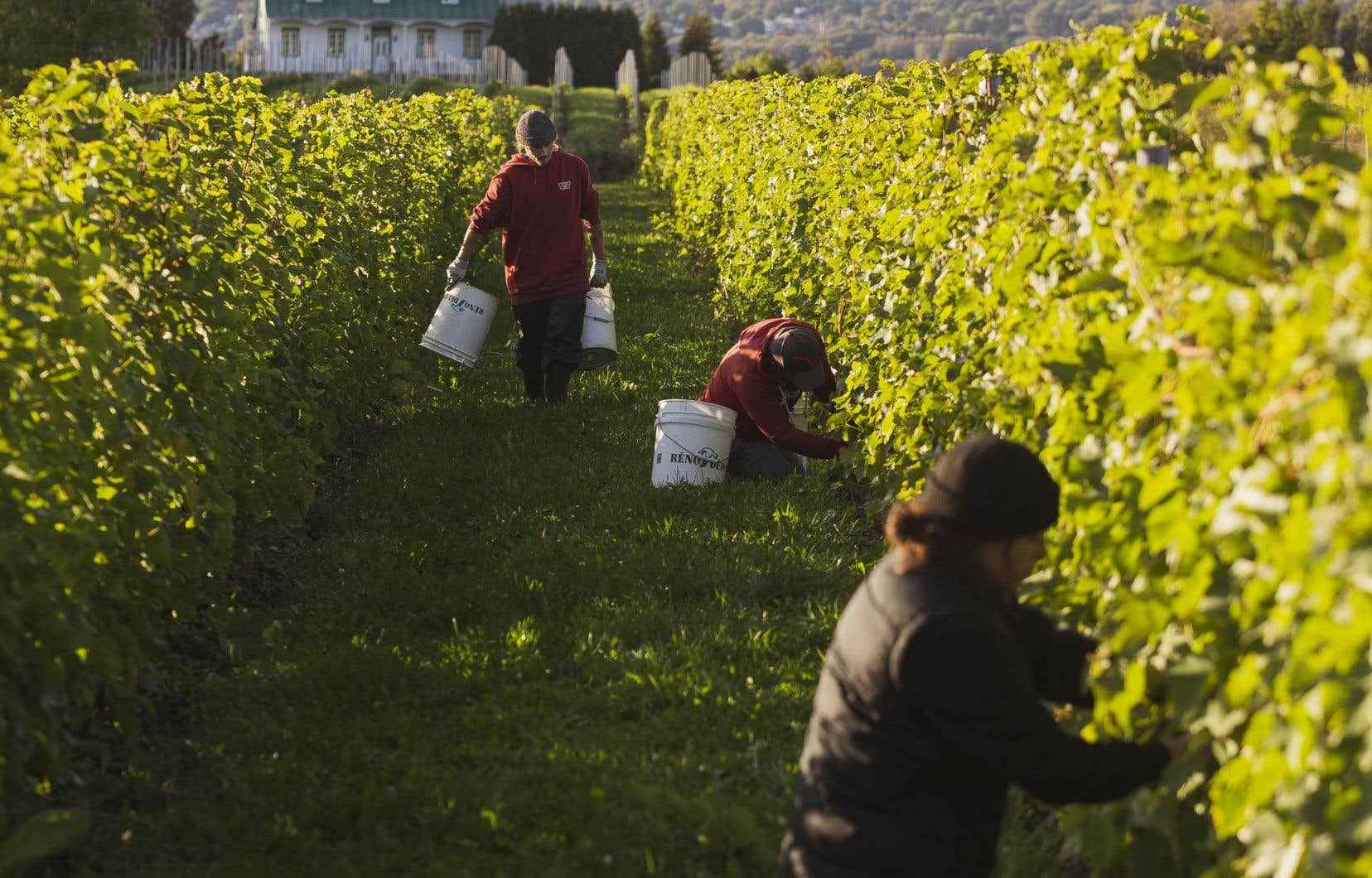This text is part of the special book Plaisirs
Did you know that the vineyards of Quebec favor rustic grape varieties, originating from Minnesota, a state that is home to a research center on vines in northern climates? The most productive grape varieties in the weather conditions of our province: Maréchal Foch, Frontenac gris and De Chaunac in the reds; the Seyval, the Saint-Pépin, or even the Louise Swenson on the white side. Ice wines have a weakness for Vidal and Sainte-Croix.
This is information, and so much more, that you could learn by participating in one or more days of harvesting in one of the 160 vineyards holding an artisanal production permit, spread throughout the province: Montérégie, Cantons- de-l’Est, Capitale-Nationale and especially the Laurentians.
This year is no exception: while producers often call on local and foreign workers, they also count on the involvement of volunteers who are keen to learn about this original and booming activity. Indeed, in the wake of the pioneering establishments L’Orpailleur and Domaine Côte d’Ardoise, in the 1980s, the commercial viticulture sector was considerably affirmed, refined and diversified. So much so that it is now associated with a real business opportunity for winegrowers. And to the very legitimate pride of producing such a noble local product on Quebec soil.
Harvesting is…
Enrich your knowledge of viticulture
Knowing how to taste wine is good (and it’s increasingly popular); knowing how it was developed is even better. “Most of the vineyards are of human size in Quebec, explains Mélanie Gore, general manager of the Conseil des vins du Québec. About 80% of the harvest is done manually in the company of the winegrowers, who are in the field with the pickers. We witness all the stages that precede the finished product, right up to the cellars, and it’s fascinating. »
Build social ties
Even if wine making remains an arduous and complex job, harvest time takes place in a friendly and festive atmosphere. “It’s a special time to meet other enthusiasts and experience a strong moment of accomplishment,” explains Anne-Marie Lemire, general manager of Léon Courville Vigneron, a medium-sized producer with 100,000 vines. The spirit is always festive, and it is not uncommon to make friends. »
Participate in the enhancement of the terroir
During the last two years, we have insisted on the importance of consuming locally and thus supporting the economy of the regions. Getting involved as a volunteer picker means supporting a mostly family business that contributes to the vitality of a territory and the pride of its inhabitants. With 87 different grape varieties in Quebec spread over all kinds of terrain, the experience promises participants to blend into captivating landscapes while practicing an authentic activity.
(Re)discover the regions of Quebec
If Montérégie and the Eastern Townships, especially Brome-Missisquoi, have long remained the two leading territories of Quebec wine production, it is quite different today: all regions are represented, including those Abitibi-Témiscamingue, Saguenay–Lac-Saint-Jean, or Gaspésie. Domaine Mont-Vézeau, in Outaouais, is an opportunity to discover the little-known beauty of Petite-Nation: “People spend as much time as they want here,” says Marc Renaud, owner of the vineyard. On harvest day, we cook pizzas, we set up big tables outside and we have fun. »
Have fun for free or at little cost
The vineyards organize paid activities during the harvest period, including a visit to the vineyard, wine tastings and a country meal. However, working one or more days for the harvest is at best free and at most conditional on paying a very moderate contribution. Others even go so far as to reward the pickers who show up on the proposed dates.
